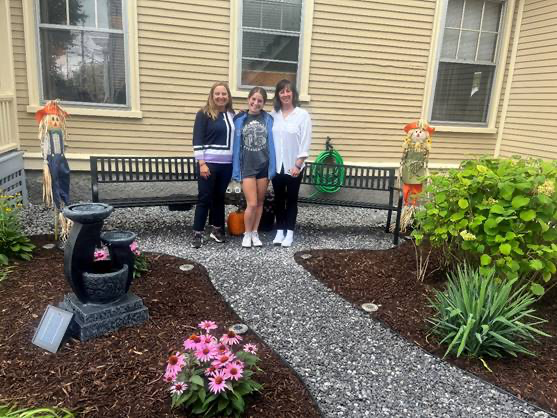Popular vacation spot faded through the 1900s
The Uncanoonuc Mountains have been a cherished and loved part of New Hampshire for centuries. These mountains lie in the southwest corner of Goffstown and stand side by side.
South Uncanoonuc Mountain, the smaller of the two, can easily be seen, with television and radio antennas sticking into the sky. North Uncanoonuc Mountain stands next to its sister and has no antennas visible.
Over the years, these mountains have provided skiing and hiking opportunities, as well as hosting an incline railway and a summer resort. The Native Americans who lived in the area named the mountains after a woman’s bosom. The mountains caught the attention of poet John Greenleaf Whittier (1807-92), who wrote, “Thy twin Uncanoonucs rose stately and tall,” in his poem “The Merrimac.”
The year 1903 sparked a large change in the history of the mountains. Some residents of New Hampshire joined together to start the Uncanoonuc Incline Railway and Development Co. This corporation had the power to develop the incline railway and to complete necessary buildings for the use of the electric railway. The railway served not only as a thrilling ride to people from Boston and other areas, but also served as a promoting force for people to vacation and buy summer homes on the mountains. The railway was connected to Manchester’s railroads, and vehicles from both railways could travel on all tracks. The trolleys that rode the incline of the mountain were open with no windows and went at a speed of up to 500 feet per minute. The highly anticipated railway opened its tracks to the public June 8, 1907, with great success. Tickets for the year-round trolley cost 25 cents in 1912.
One of the most popular uses of these beautiful mountains was for vacations. Not only summer cabins, but a grand hotel welcomed visitors to the summer vacationing hub of southern New Hampshire. The summer homes that once stood among the trees ranged from small, rustic log cabins to beautiful cottages with modern amenities. Some foundations and one or two small cottages still can be seen today.
If you hike the south mountain today, you wouldn’t guess that a grand resort stood facing the crystal-clear skies and the rolling mountains. The Uncanoonuc Hotel (or The Uncanoonuc) was the most elegant summer resort in southwest New Hampshire. The building had 37 guest rooms and a dining room that seated 120. The resort stood 51/2 stories high. The hotel had many decks, offering beautiful views of the surrounding land. Men, women and children walked the wooden decks, admiring the hotel and the picturesque view. Sadly, the great hotel burned to the ground Feb. 16, 1923, marking the slow but steady end to the Uncanoonuc tourist phenomenon.
There were attempts to continue the tourist attraction, and by the summer of 1923, a new resort, The Pavilion, had been built to replace the burned hotel. It stood three stories high. Much to the hotel company’s dismay, it too burned March 6, 1930. Two more attempts – one a small resort, the other a restaurant – were built. The small resort was destroyed by the hurricane of 1938, and the restaurant was torn down in 1967. After that, the decaying summer homes and the memories of summers on the mountains seemed to collapse.
By the 1940s, the incline railway was abandoned and the ski area halted. This was the death of the past, the death of the tourist phenomenon. This was also the beginning of the future of the mountain. As the trees began to grow larger and the remnants of the past began to grow smaller, the mountain was purchased by many organizations and the town of Goffstown. Today, you can enjoy hikes on either mountain, and if you hike the south mountain, you will see remnants of cabins, summer homes, and even of the railway.
Antonio Pastor is a sixth-grade student at Mckelvie Intermediate School in Bedford. His column, which examines the history of well-known New Hampshire destinations, runs the fourth week of the month.






